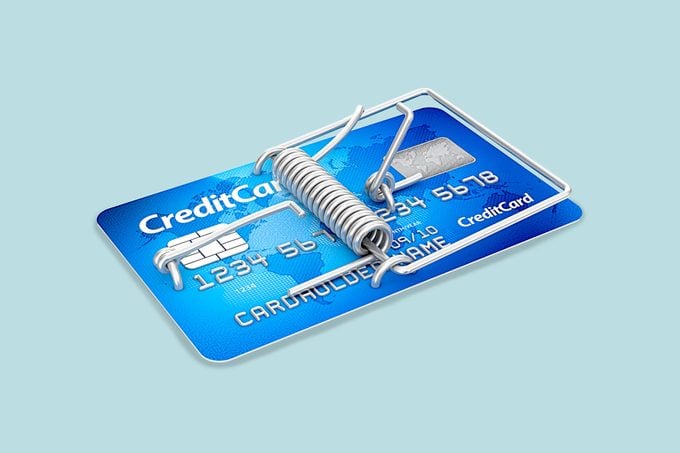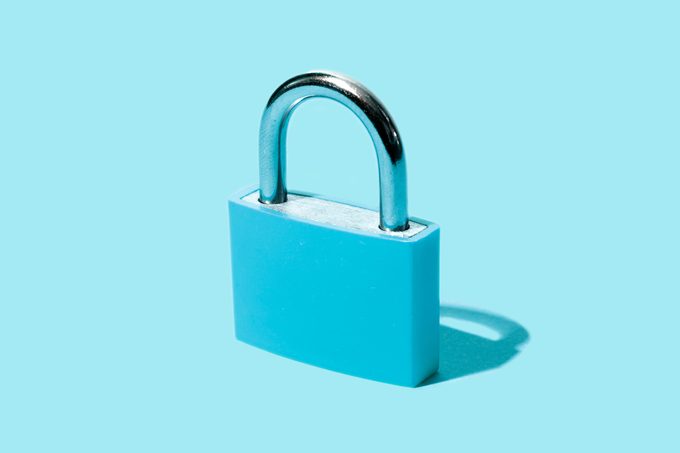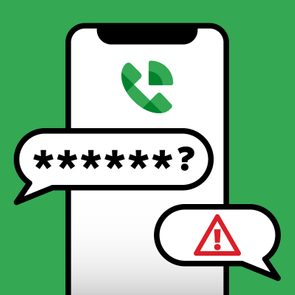10 Instagram Scams and How Cybersecurity Experts Avoid Them
Updated: May 28, 2024

Your favorite social media platform may also be a stalking ground for scammers. Learn how to spot, report and avoid common Instagram scams so you can scroll confidently.
Once upon a time, Instagram was a place to take a break from the stress of life and scroll through pretty pictures while avoiding discussions of upcoming elections. Today, you’ll still find recipe videos, tech tips and photos of friends’ vacations, but you’ll also discover dubious advice, endless ads, fake accounts and a wealth of Instagram scams.
“Think of an Instagram scammer as a digital version of a pickpocket,” says Monica Eaton, chief operating officer of Chargebacks911. “A professional pickpocket won’t waste their time on an empty dirt road, right? Instead, a successful pickpocket needs to be where the people are: in large crowds, where it’s tough to identify everyone and the foot traffic is rapid.” With an estimated 2 billion users, that’s Instagram.
Want to be better prepared to recognize and hopefully avoid Instagram scams? “Just like the real world, in the cyber land of Instagram, not everything is what it seems,” Eaton says. We spoke to Eaton, along with seven other identity-theft, cybersecurity and privacy experts, for the latest information on everything from social media crypto scams to Instagram investment fraud. Ahead, we’ve gathered what you need to know about the most common Instagram scams, as well as how to identify and avoid them.
Get Reader’s Digest’s Read Up newsletter for more tech, humor, travel, tech and fun facts all week long.
About the experts
|
On This Page
What are Instagram scams?
An Instagram scam is fraud specifically designed to target Instagram users, and the types of scams continue to grow. “Just like there are different specialties in law, sports, medicine and science, there are also different specialties when it comes to cybercrimes,” Eaton says. “Some hackers are masters at code. Others might focus near-exclusively on crypto. But today, many are pursuing platform-specific fraud schemes on popular social media sites.”
If you’re not careful, you can lose money to bank scams and wire fraud on Instagram. You can find yourself unknowingly buying counterfeit goods, sending money to a paramour who doesn’t exist or losing your life savings in a get-rich-quick scheme. When it comes to Instagram scams, the possibilities (and types of scams) are seemingly endless.
“Phishing is still the No. 1 scam method, bar none, across the internet,” says Andy Rogers, a senior assessor with Schellman, a global cybersecurity company. “In 2021, the FBI reported that phishing dwarfed its nearest peer by four times the number of reports in comparison to any other form of internet crime.”
Why do people scam on Instagram?
The point of any scam is to put money in the scammers’ pockets, whether they’re doing this directly—through fake ads, for example—or through phishing and more indirect means. “Scammers, through Instagram, are seeking something specific, such as personal, confidential and/or financial information,” says Lisa Schiller, director of investigations and communications for the Better Business Bureau of Wisconsin.
Social media is a low-cost way to reach billions of people, and hacking an Instagram account or manufacturing a fake persona is easier than ever. Add to this the fact that people make themselves vulnerable by putting personal details on Instagram, and it’s easy to see how scammers get to know a target’s interests and gain clues on how to best approach them.
The fact that Instagram is an established social media platform may work in scammers’ favor as well. It gives users a sense of security that makes them less likely to suspect wrongdoing. “There is nothing particularly unique about Instagram that makes it vulnerable to scams, but it does provide a platform trusted by its users,” says Steven J.J. Weisman, an expert in scams, identity theft and cybersecurity. “And when it comes to scams, trust is critical.”
Bottom line: People scam on Instagram because other people continue to fall for these schemes. “Instagram’s large, informal user base makes it a fertile ground for scammers,” says Vandan Pathak, a senior application security consultant at Optiv, a firm devoted to cybersecurity solutions. “Fraudulent accounts, which are easily created, blend into the crowd [comment sections] of legitimate corporate or individual accounts.”
How many people are scammed on Instagram?
Statistics aren’t available for how many people fall victim to these Instagram scams each year, but we know that the online scams are increasing. According to Federal Trade Commission (FTC) data, “more than 1 in 4 people who reported losing money to fraud in 2021 said it started on social media with an ad, a post or a message.”
Between January 2021 and January 2023, more money was lost to frauds originating on social media than any other contact method. In fact, consumers reported losing $2.7 billion to social media scams during that time period.
The most frequently reported fraud loss in the first half of 2023 was from people who tried to buy something marketed on social media, which made up 44% of all social media fraud loss reports—undelivered goods, no-show clothing and electronics, and so on.
What are common scams on Instagram?
Romance scams

How the scam works
“Romance scams are quite popular and have even happened to people I know,” says Chris Hauk, a consumer privacy champion at Pixel Privacy. “Scammers send messages to targets, claiming to be divorced, widowed or in some type of bad situation.”
According to the FTC, in the first six months of 2023, half of the people who said they lost money to an online romance scam said it began on Instagram, Facebook or Snapchat.
What the scam entails
These con artists often use catfishing or military romance scams while they love-bomb potential victims to elicit sympathy and fake a whirlwind romance. “They’ll claim they need money to get out of their country or to escape from an abusive spouse,” Hauk says. “The scam may continue for weeks as they work to get victims to trust them, then ask for money.”
How to identify it
Once you know to be aware of this scam, it’s easy to identify. If a stranger suddenly likes a bunch of your photos and then contacts you on Instagram in a flirtatious manner, it’s cause for suspicion. If they ask you for money, don’t give them anything and cease communication. Blocking their account is also a good idea.
“If an Instagram account is love bombing you yet unable to do a video chat or converse on non-Instagram platforms, it’s a red flag,” Eaton says. “If you reverse-image search the [profile] photo and it’s connected to other accounts, that’s another warning sign. And if they beg you for money before you even meet, keep your guard up—and your bank account protected.”
Lottery scams
How the scam works
In lottery scams, victims are told that they have won a sweepstakes or lottery, and they merely need to pay some income taxes or administrative fees to claim their prize. “It is impossible to win a lottery you haven’t entered, and yet people are contacted through social media and told that they have won a lottery, and they let their greed blind them,” Weisman says.
What the scam entails
Beyond suggesting that you’ve won the lottery, another commonly occurring lottery-related scam on Instagram involves Mavis Wanczyk, who won a huge lottery prize a few years ago. “Scammers pose as her on Instagram and then contact people and say that she is giving them a large sum of her winnings,” Weisman warns.
How to identify it
If someone contacts you claiming that you’ve won the lottery or offering to give away a portion of their own lottery winnings “to a few lucky people,” back away. This is a scam. If you need more convincing, Google the winner’s name. You’re likely not the first person the scammer has contacted, and you’ll probably see information on Google related to the scam.
Loan scams
How the scam works
“Scammers will contact you through Instagram, offering loans with terms that seem too good to be true, and once they have your financial data, they will disappear,” says Alex Hamerstone, director of advisory solutions at cybersecurity company TrustedSec.
What the scam entails
Social media is not the place to find a great deal on loans. “This scam has the scammer promising low-interest, instant money, but as soon as you make the first payment—up front, of course—they disappear without a trace,” Rogers says. “This is along the lines of the quick-money, low-hassle trick.”
How to identify it
It’s easy to identify a scammer in this situation because no legitimate loan officer will cold-contact you through social media. These are scammers who will take your money and run.
False investment scams

How the scam works
“Investment scams and advanced-fee scams both entail giving the scammer money in exchange for some greater future reward that is never delivered,” says Paul Bischoff, a privacy advocate at Comparitech, a consumer-focused cybersecurity company. “Investment scams these days often revolve around cryptocurrency. Advanced-fee scams can be about products, services, jobs, lotteries or some type of shortcut.”
What the scam entails
“Bad actors post comments luring people to reach out to them for ways to get rich,” Pathak says. “Then they convince their victims to provide access to funds with the promise of doubling their value through various investments in return for a share of the profits. Of course, the victim is then denied access to said funds and runs the risk of suffering even larger financial, data and/or identity loss.”
How to identify it
There’s no such thing as an investment shortcut, but the possibility of fast, easy money is enticing—and people fall for it. Crypto scams are particularly common on Instagram. “No one should ever invest in anything without thoroughly researching the person offering the investment and the type of investment itself,” Weisman says. “Legitimate investments are not solicited through Instagram.”
Job scams
How the scam works
These days, people are looking for recession-proof careers and profitable work-from-home opportunities, and scammers are taking advantage of that. These fraudsters seek out job searchers on Instagram with promises of dream jobs. There’s just one problem with this: The jobs don’t exist.
Through job scams, bad actors are trying to get your information to con you out of money or your entire identity. When applying for a job, legitimate employers will ask for information such as your social security number, but these Instagram scams are not legitimate job offers, and you shouldn’t give this information to someone who contacts you through Insta or any other social media site.
What the scam entails
Scammers troll Instagram accounts looking for people dissatisfied with toxic work culture who show signs of quiet quitting and then send them misleading or fake job postings to try and get their personal information or money. “Job scams turn up on Instagram because people trust the site,” Weisman says. “But trust me: You can’t trust anyone.”
How to identify it
Instagram says to “avoid job postings that sound too good to be true or ask you to pay anything up front. When clicking on a link from a job posting, watch out for websites that seem unrelated to the original job posting or that ask for sensitive information (like a government ID) but don’t use secure (HTTPS) browsing.”
So, what can you do? “If you see what appears to be a good job offer, you should research the company, and if it turns out to be a legitimate company, contact their human resources department to see if the job offer is legitimate or if it was a scammer posing as the company,” Weisman suggests.
And whatever you do, never give money to a so-called employer considering your application. That’s a red flag on LinkedIn, Instagram and every other social media site.
Credit card scams
How the scam works
“These are pretty straightforward,” Hamerstone says. “People will sell you something [which you may or may not receive and which may be counterfeit] and then steal the credit card info you used for payment. Be sure that when shopping online, you are using payment methods that have consumer protection.”
What the scam entails
In this online shopping scam, con artists take your credit card information for goods they never intended to send to you. They’ll use your credit card number to make purchases on your account. Be careful of ads you click on, since some are set up by scammers.
How to identify it
If you order something through an Instagram account and don’t receive it, you may have unwittingly engaged with a scammer. Keep a close eye on your credit card, and if you notice suspicious activity or unauthorized charges, report it to your credit card company immediately. The company will most likely cancel the card and issue you a new one.
Paid subscription services scams

How the scam works
Scammers will offer you rock-bottom prices on subscriptions to popular services. “They will get your credit or debit card info, then use it to make fraudulent purchases,” Hauk says. “Remember the old adage: If it seems too good to be true, it probably is.”
What the scam entails
These scammers track legitimate Instagram accounts to see who likes and comments on the account’s offers. They then mimic the accounts. Once you follow the phony account, the scammers will make you an even better deal—though it’s no bargain because it’s a scam—and take your payment information for nefarious activities.
How to identify it
These scammers take popular accounts and make subtle changes to the username, adding a period, underscore or extra letter to the name. At first glance, it may look like an account you follow. Instead of @readersdigest, for instance, you might come across @readers_digest.
If you have any questions about the legitimacy—and you should before making a purchase—look into whether the account is legit. Sure, you can trace a fake Instagram account, but you don’t have to get all technical. Usually, double-checking the username will clue you in to whether you’re dealing with a scammer.
Phishing scams
How the scam works
Bischoff describes phishing as “an attack that uses social engineering to trick victims into handing over private information, installing malware or sending money.” Fraudsters may send you phishing emails or might even attack via text message, something known as smishing.
What the scam entails
In an Instagram phishing scam, someone tries to access your Instagram account by sending you a suspicious message or link asking for your personal information. “Instagram will never send emails or messages asking for your login information,” Hauk says. “If you turn over your password, you run the risk of being locked out of your own Instagram account.”
How to identify it
Most phishing emails are easy to recognize—you’ll spot grammar and spelling mistakes, incorrect company logos and, when you hover over links, suspicious URLs.
But spear phishing emails are trickier to spot. That’s because they’re tailored to an individual. “They come addressed to us by name, and they generally deal with specific subjects in which we are interested or appear to come from companies with which we do business or have accounts,” Weisman warns.
Thankfully, Instagram installed a new security feature that lets you determine whether an email that’s claiming to be from Instagram is actually from Instagram or is a spear phishing email. “The new feature enables you to compare the email you received with any security emails Instagram has sent in the previous 14 days,” Weisman says. “If the email you received isn’t shown on the list of emails legitimately sent by Instagram in the last two weeks, you can be confident that it is a spear phishing email and know to ignore it.”
Inauthentic seller scams

How the scam works
Inauthentic sellers offer too-good-to-be-true sales on popular items and try to create a sense of urgency to get buyers to act quickly.
What the scam entails
These scammers request payment through a nonsecure method or misrepresent their location in their posts. “Similar to credit card fraud, these sellers will get you to buy something and then either send you counterfeit goods or just steal the payment card information you sent them,” Hamerstone says.
How to identify it
It’s worth repeating: If a deal seems too good to be true, it probably is. If the seller is pressuring you to use Zelle or another peer-to-peer payment method, shop elsewhere. This may be an Instagram scam. And unlike credit cards, money-transfer apps usually have little to no fraud protection. In other words, you’re unlikely to get your money back if you fall for a Venmo, Cash App or Zelle scam.
Fake copyright scams
How the scam works
In this newer Instagram scam, con artists attempt to steal your Instagram password and go phishing for your email login.
What the scam entails
Victims receive a legitimate-looking email from someone posing as Instagram. According to the Better Business Bureau, the email goes something like this: “You have violated copyright laws, and your account will be deleted within 24 hours.” It also tells you that if you think Instagram has made a mistake, all you need to do is click the button and “verify” your account.
At this point, you’ll be redirected to a website that prompts you to input your Instagram credentials. That would be bad enough, but this scam goes one step further. A pop-up asks you to verify your email address. You’ll see a list of email providers, and the site will prompt you to enter your email address and password.
This one is especially tricky because after you’ve given up your Instagram and email login information, the phony site will redirect you to the real Instagram website as a clever way to make you think the interaction is aboveboard.
How to identify it
Your best defense is to double-check the “from” address in the email to be sure it’s actually from Instagram. “Any email from an Instagram representative will come from an address ending in @mail.instagram.com [or @support.instagram.com],” Eaton says. “If an email comes from somewhere else—even if it looks and sounds authentic—do not respond to it. And if you have questions, [email protected] and [email protected] are legitimate, real email accounts that were set up for you to forward dubious messages.”
Eaton adds that Instagram won’t message you about copyright violations or send requests for your password. “Do not respond or reply to these messages, and never, ever click on any of the links,” she says.
How can you avoid Instagram scams?

Hopefully you have an idea of what legitimate accounts look like, as well as how to avoid Instagram scams. If something feels off, don’t engage with potential scam accounts at all. Hamerstone recommends the following actions, which will help you protect yourself.
- Trust your instincts, and remember that anything that seems too good to be true almost always is.
- If anyone is asking you for information or money, take a step back and think about why they might be asking for it. Scammers often give a sense of urgency, knowing that the more time the victim has to think about the scam, the less likely they are to fall for it.
- Never send anyone money if you don’t know them.
- Never give anyone your passwords or other personal information.
- If someone is befriending you, especially someone who seems to be famous, research to ensure it is a real account. Look to see how long the account has been in existence and how many followers it has. Look for the celebrity’s verified account.
- Remember that legitimate commerce is not conducted using gift cards.
- Do not reuse passwords across multiple apps or websites. This is a common way for scammers to get into your accounts. Instead, choose strong passwords.
- If you think you have fallen victim to a scam, change your password immediately and look at your account to see if anyone else is logged in.
- Use multifactor authentication.
- Be aware of how the world works. For example, it is unlikely that an international supermodel wants to meet up with you and needs you to send money for a plane ticket.
- Remember that Instagram won’t ask you for your password. If someone claims to be from Instagram and is asking for personal information, it is a scam.
- Don’t click on links sent by strangers.
- If a friend or relative reaches out to you for money on Instagram, call or text outside Instagram to ask if the request was legit.
- Beware of anyone asking you to leave the Instagram platform and switch to communication elsewhere.
What should you do if you’ve been scammed on Instagram?
If you’ve engaged with an account that you think is an imposter, you should immediately report and block them on Instagram. Here’s how to report a user on the app:
- Tap the scammer’s username to go to their profile.
- Tap the three dots found in the top-right corner of the profile.
- Tap “Report.”
- Select a reason for the report. Options include “It’s spam” and “Scam or fraud.”
- Select “Scam or fraud.”
- Tap “Submit Report.”
- Tap “Next.”
- Unfollow and block the scammer.
Bischoff says the action you take depends on the nature and severity of the scam. “If you spot a scam but haven’t fallen for it, you can report it to Instagram and cancel any cards that might’ve been impacted, change the password on any account for which you’ve handed over the password and freeze your credit if you think you might be an identity-theft victim.”
Consider, too, what type of protection your payment method has. “Debit cards and credit cards have different levels of consumer protection,” Eaton says. “Credit cards protect you from fraud far more comprehensively, which is why they’re safer to use for online purchases. But let your bank know so they can stop the bleeding, protect your assets and help you recover.”
You can also file a claim with the FBI’s Internet Crime Complaint Center and via the Federal Trade Commission’s Report Fraud site. Your local police department can also help because the crime occurred in its jurisdiction.
“How your money was stolen will directly impact your potential for recovery,” Eaton says. “Either way, the best way to recover from an Instagram scam is to not fall for it in the first place, so stay vigilant.”
Why trust us
Reader’s Digest has published hundreds of articles on personal technology, arming readers with the knowledge to protect themselves against cybersecurity threats and internet scams as well as revealing the best tips, tricks and shortcuts for computers, cellphones, apps, texting, social media and more. For this piece, Jaime Stathis tapped her experience as a longtime journalist writing about technology and cybersecurity, and interviewed eight tech and internet-security experts. We rely on credentialed experts with personal experience and know-how as well as primary sources including tech companies, professional organizations and academic institutions. We verify all facts and data and revisit them over time to ensure they remain accurate and up to date. Read more about our team, our contributors and our editorial policies.
Sources:
- Monica Eaton, chief operating officer of Chargebacks911
- Andy Rogers, senior assessor with Schellman
- Lisa Schiller, director of investigations and communications for the Better Business Bureau of Wisconsin
- Steven J.J. Weisman, expert in scams, identity theft and cybersecurity
- Vandan Pathak, senior application security consultant at Optiv
- Chris Hauk, consumer privacy champion at Pixel Privacy
- Alex Hamerstone, director of advisory solutions at TrustedSec
- Paul Bischoff, privacy advocate with Comparitech
- FBI: “Internet Crime Report 2021”
- Federal Trade Commission: “Social media a gold mine for scammers in 2021”
- Instagram: “Avoid scams on Instagram”
- Better Business Bureau: “BBB Scam Alert: Fake copyright email scares Instagram users into sharing passwords”
- FTC: “FTC Data Shows Consumers Report Losing $2.7 Billion to Social Media Scams Since 2021”
- FTC: “Report Fraud”























